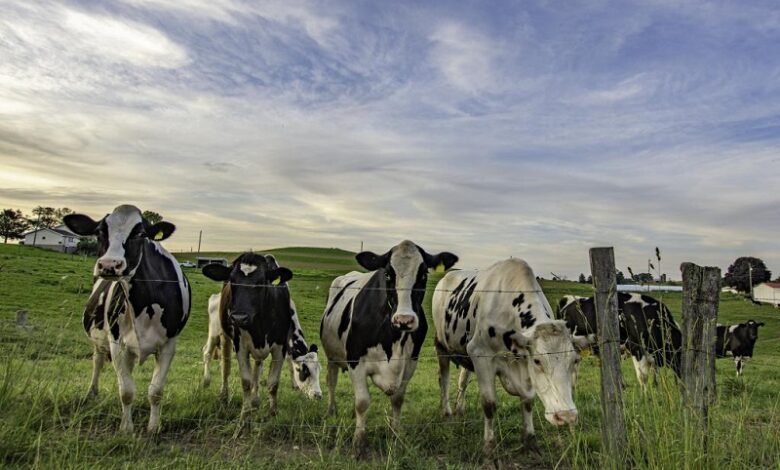Bird Flu Virus Detected in US Cattle Revealed by Genomic Analysis

News Mania desk/Agnibeena Ghosh/1st May 2024
In a revelation that underscores the stealthy dissemination of a strain of highly pathogenic avian influenza, preliminary genomic analysis unveils a protracted transmission of the virus within US cattle over several months. The incipient phase of the outbreak is presumed to have occurred around late December or early January, postulating a clandestine diffusion of the virus from an infected bird to a cow. This suggests a broader scale of infection among cattle across the United States and potentially neighboring regions, surpassing the current reported cases.
The assessment stems from prompt and concise analyses conducted by researchers subsequent to the release of genomic data by the US Department of Agriculture (USDA) into a public repository. However, scientists express dismay over the absence of critical information crucial for elucidating the outbreak’s genesis and progression. Furthermore, the delayed dissemination of genomic data—almost four weeks post-announcement of the outbreak—raises concerns among researchers.
Speed plays a pivotal role in curtailing the spread of fast-spreading respiratory pathogens, particularly those with pandemic potential, emphasizes Tulio de Oliveira, a bioinformatician at Stellenbosch University in South Africa. Although the cattle outbreak isn’t anticipated to confer human-to-human transmission capability to the virus, vigilance remains imperative.
Martha Nelson, a genomic epidemiologist at the National Center for Biotechnology Information (NCBI), underscores the significance of expeditious data acquisition in outbreak response, emphasizing the narrowing window for intervention with each passing week. The absence of crucial metadata, such as precise collection dates and geographic origins of samples, exacerbates the challenge of comprehensively understanding the outbreak dynamics and devising effective containment strategies.
The genomic scrutiny unveils that the cattle outbreak likely originated from a single introduction from wild birds in December or early January. While the revelation of a solitary spillover event is reassuring, the relentless dissemination of the virus over several months paints a disconcerting picture. The genetic diversity observed in the virus infecting cattle underscores its evolutionary trajectory over time, with mutations hinting at potential adaptations for mammalian transmission.
Moreover, the intermittent transmission of the virus between infected cows, birds, and cats underscores the multi-host nature of the outbreak, further complicating containment efforts. The absence of certain signature mutations observed in cattle from the viral genome sequenced in a human case poses a baffling conundrum, prompting speculation regarding potential missing samples and alternative transmission routes.
Efforts to glean additional insights into the outbreak’s origin and transmission dynamics hinge on intensified sampling of cattle and wild birds. Enhanced surveillance coupled with comprehensive genomic analysis is imperative for unraveling the intricacies of the outbreak and devising targeted intervention strategies.
Despite the data gaps and challenges, the USDA remains committed to expediting the dissemination of curated files with pertinent epidemiological information while ensuring continued accessibility to raw data. This concerted effort underscores the agency’s resolve to foster transparency and collaboration in combating the evolving threat posed by avian influenza.






